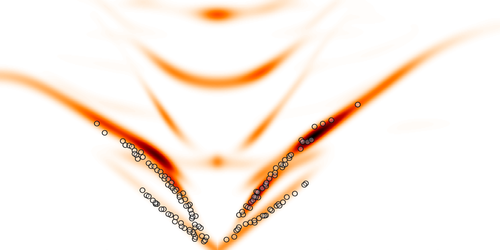Calculating How Atoms Scatter Off Surfaces
When it comes to using particles to probe a surface’s atomic structure, the more massive the particle, the lower its requisite energy. Helium atoms need to pack just 0.1 eV or so to deliver atomic resolution. At that energy, an atom’s encounter with the surface is so gentle that it scatters before penetrating the lattice. It does, however, have just enough energy to excite quantized lattice vibrations, or phonons, in the material. Fully exploiting helium atoms as surface probes entails understanding those subtle interactions from first principles. That theoretical challenge has now been met by Michelle Kelley of Rensselaer Polytechnic Institute, New York, and her collaborators [1].
The first use of helium atoms to characterize a surface took place in 1930. But until now, no one has derived an ab initio theory of the underlying scattering, in part because of the nature of scattering. A helium atom approaching a surface has so little kinetic energy that it gets pushed away from the surface when the weak outskirts of its potential overlap with the weak outskirts of the surface electrons’ potential. At that juncture, both potentials depend sensitively—and therefore critically—on distance. The excitation of surface phonons adds a further complication.
Kelley and her collaborators considered the case of helium atoms scattering off a niobium surface. They combined the atom scattering and phonon excitation into a single mathematical event and connected it via helium–niobium interactions to surface electrons. They also captured how the atom scattering and phonon excitation interfere with each other. By examining these complexities, they were able to evaluate the effects of not including them, which turned out to be significant. Although the researchers considered a specific system, they say that their theory is general and can be used for other atom–surface combinations.
–Charles Day
Charles Day is a Senior Editor for Physics Magazine.
References
- M. M. Kelley et al., “Fully ab initio approach to inelastic atom-surface scattering,” Phys. Rev. Lett. 132, 016203 (2024).




